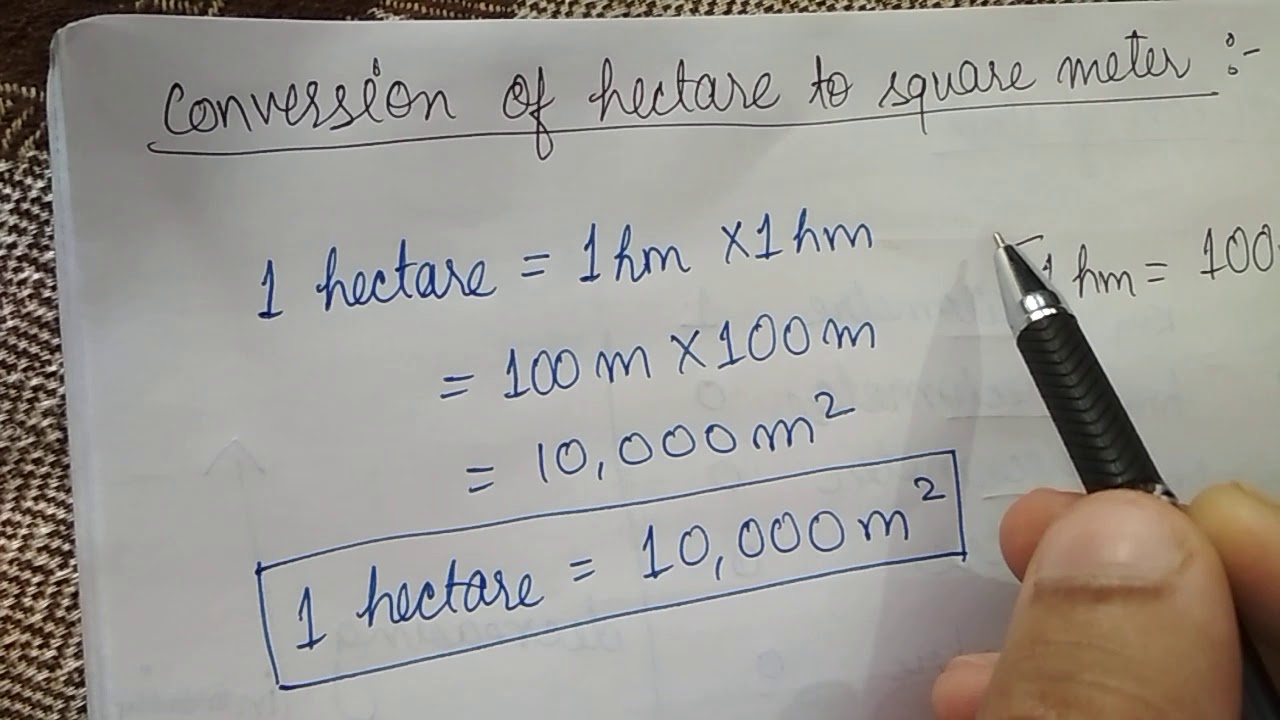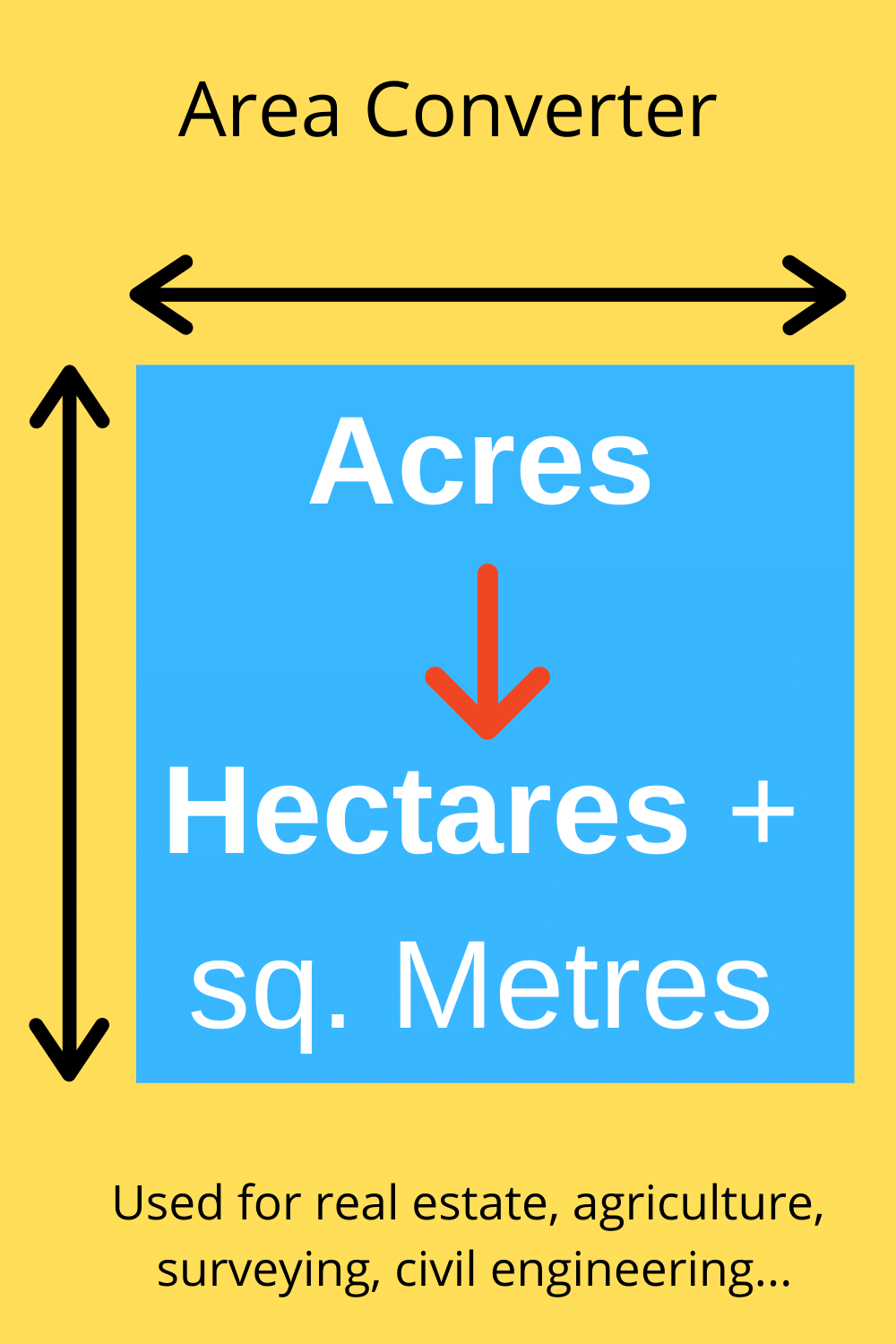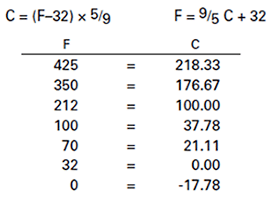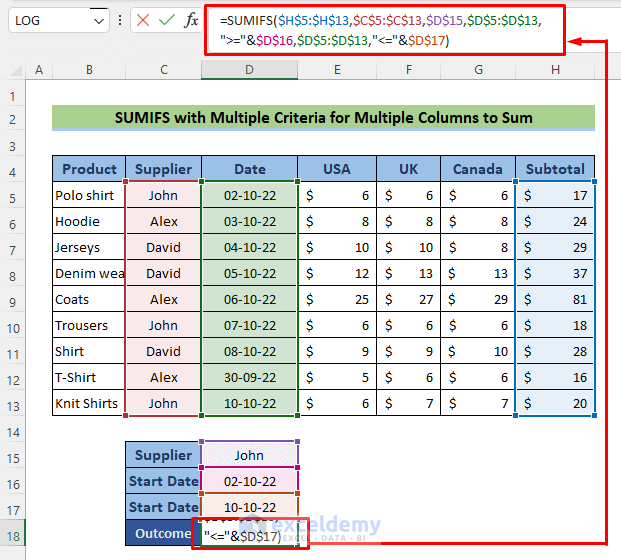The Ultimate Guide: 1 Hectare to Square Meter Conversion

In the world of land measurement, conversions between different units are essential for accurate understanding and communication. This guide aims to provide a comprehensive understanding of converting 1 hectare to square meters, a fundamental conversion in the field of land surveying and real estate.
Understanding the Hectare and Square Meter

The hectare, abbreviated as ha, is a unit of area commonly used to measure land, particularly in countries that follow the metric system. It is equal to 10,000 square meters or, more simply, 100 meters by 100 meters. This unit is especially useful for larger areas, providing a convenient way to quantify fields, farms, and other vast spaces.
On the other hand, the square meter, denoted as m², is a more precise unit for measuring smaller areas. It is a fundamental unit in the International System of Units (SI) and is widely used in various industries, including construction, architecture, and engineering.
The 1 Hectare to Square Meter Conversion

Converting 1 hectare to square meters is a straightforward process, given the direct relationship between these two units. Since 1 hectare is equivalent to 10,000 square meters, the conversion is as simple as multiplying the area in hectares by 10,000.
To illustrate, let's consider a hypothetical scenario where we have a piece of land measuring 1 hectare. This land would have an area of 10,000 square meters if we were to measure it in the more precise unit of square meters.
Step-by-Step Conversion Process
- Start with the area in hectares: 1 ha.
- Multiply the area by the conversion factor: 1 ha × 10,000 m²/ha = 10,000 m².
- The result is the area in square meters: 10,000 m².
Applications and Practical Examples
The conversion from hectares to square meters is a common practice in various fields and has several practical applications.
Land Surveying and Real Estate
In land surveying, the conversion is essential for providing precise measurements of properties. When dealing with large plots of land, especially in rural areas or agricultural regions, expressing the area in hectares can be more practical. However, when it comes to detailed planning, construction, or legal documentation, the conversion to square meters is necessary.
For instance, imagine a real estate agent selling a property listed as 5 hectares. To give potential buyers a clearer understanding of the size, the agent would need to convert this to square meters: 5 ha × 10,000 m²/ha = 50,000 m². This conversion ensures that buyers have an accurate perception of the land's size, aiding in their decision-making process.
Environmental and Agricultural Studies
In environmental science and agriculture, hectares are often used to measure and discuss large-scale land areas. For instance, when discussing deforestation rates or the size of agricultural fields, hectares provide a convenient unit. However, when detailed analyses or specific research is required, converting to square meters allows for more precise calculations and comparisons.
Consider a research study analyzing the impact of climate change on a specific forest area. The forest's total area might be described as 200 hectares. To perform detailed analyses, such as calculating tree density or studying biodiversity, the conversion to square meters becomes crucial: 200 ha × 10,000 m²/ha = 2,000,000 m². This precise measurement enables researchers to make more accurate observations and predictions.
Urban Planning and Infrastructure Development
Urban planners and engineers often use square meters as the primary unit for measuring and designing spaces. When dealing with smaller areas like city blocks or individual buildings, square meters provide a more practical unit. However, when discussing larger areas, such as the total green space in a city or the size of a proposed development project, hectares can be more suitable.
For example, a city planner might propose a new park covering an area of 3 hectares. To assess the impact of this park on the city's green space, the planner would need to convert this to square meters: 3 ha × 10,000 m²/ha = 30,000 m². This conversion allows for a more accurate comparison with other urban spaces and helps in making informed decisions about the city's infrastructure.
Accuracy and Consistency in Conversions
When dealing with land measurements, accuracy is paramount. Ensuring consistent and accurate conversions is essential to avoid misunderstandings and errors. Here are some best practices to maintain precision:
- Use Standard Conversion Factors: Stick to the standard conversion factor of 1 hectare = 10,000 square meters. This ensures consistency across different projects and regions.
- Double-Check Calculations: Always verify your calculations, especially when dealing with large areas or significant projects. A small error in conversion can lead to substantial discrepancies.
- Rounding and Precision: Decide on the level of precision needed for your specific application. Rounding off to the nearest whole number or decimal place can simplify calculations and make results more readable.
Conclusion

Converting 1 hectare to square meters is a fundamental skill for anyone working with land measurements. By understanding the relationship between these units and following a simple conversion process, you can ensure accurate and consistent results. Whether you’re in land surveying, real estate, environmental science, or urban planning, this conversion plays a vital role in your daily tasks and projects.
Remember, the conversion from hectares to square meters is a direct multiplication by 10,000. This simple yet powerful tool allows you to bridge the gap between different units, making your measurements more versatile and understandable across various fields.
Frequently Asked Questions
What is the significance of the hectare in land measurement?
+The hectare is a commonly used unit in land measurement, particularly in countries following the metric system. It is practical for larger areas like farms, forests, or urban developments, providing a convenient way to express size.
Why do we need to convert hectares to square meters?
+Converting hectares to square meters allows for more precise measurements and calculations. While hectares are useful for larger areas, square meters provide a more detailed understanding, especially when dealing with specific structures or detailed analyses.
How accurate are these conversions, especially for large areas?
+The conversion from hectares to square meters is extremely accurate, as it is a direct multiplication by 10,000. This ensures that the converted value is an exact representation of the original area. However, it’s important to verify calculations and ensure consistent use of the conversion factor.



